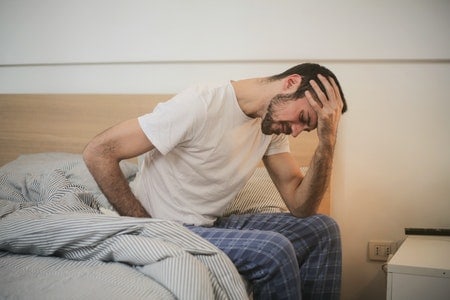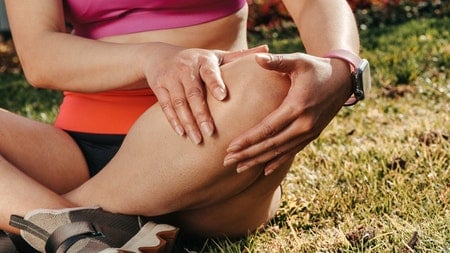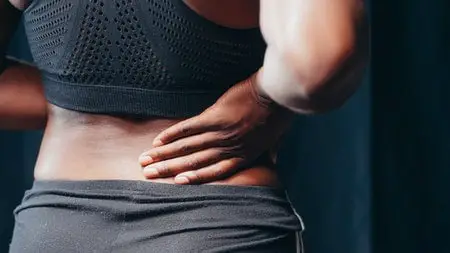Most horse owners will experience some form of aching in their legs and/or feet after riding for any length of time. This can be due to improper saddle fit, incorrect stirrup length, or just general tiredness.
Horseback riders typically use their thighs, hips, back and arms to guide the animal in various directions. Riders also need to be able to control their own movements so they can jump over objects or avoid obstacles on the ground. This all requires strong abdominal and leg muscles as well as arm strength that most people don’t have naturally.
Hip Pain After Riding A Horse
Hip pain is a chronic condition that affects many horse riders. It can be caused by many things, such as injury or arthritis, but the most common cause of hip pain after horse riding is iliotibial band syndrome.
Iliotibial band syndrome (ITBS) occurs when the ITB rubs up against the femur bone and it causes swelling and inflammation in your hip joint. Commonly seen in runners(1), this condition also impacts those who take part in sports like horse riding where you constantly put pressure on one side of your body to maintain balance.

One of the most common postural problems among horse riders is a stiff and sore hip region after sitting for long periods. The reason this occurs, as explained by an expert physical therapist in Kentucky who specializes with athletes on horses, are twofold: from your riding position to tight muscles at the top of one’s leg; it can also be felt around to front or back regions. When you’re seated there may not seem like anything wrong- but when you stand up again these intrinsic muscle groups start working overtime because they have been so neglected while seated!
When people ride larger horses over longer distances, their hip pain can worsen. This is largely due to bad seating posture which makes those particular areas more susceptible since all that weight gain has stretched out any unused muscles.
Treating Hip Pain from Horse Riding
Hip pain is a common complaint of horse owners. The most common causes are saddle fit, riding technique and injury to the hip joint. Knowing the cause can help in determining what treatment is best suited for your needs.
Saddle Fit: If you have recently switched saddles or if you have tried aftermarket pads, it may be necessary to wait at least 3 months before assessing the effectiveness of these changes on your hip pain as they are not immediate solutions.
Riding Technique: Different people use different techniques when riding their horses. Some riders that generally lean back more will put more pressure on their hips which can lead to increased discomfort over time if this habit isn’t corrected or monitored closely by a veterinarian or professional trainer.
Injury: Hip injuries usually occur over time when temporary pain is ignored and not addressed.
Trying to stretch your muscles can help keep them flexible, but there is no way of knowing which muscle has gone too tight. All you know for sure is that sitting in one position and rocking back and forth on a horse isn’t going to be fixed by a few minutes of stretching.
Hip pain will only get worse if the problem’s not addressed sooner rather than later with deep tissue massage or other treatments available at medical clinics near you.
Knee Pain After Riding A Horse
One of the most common ailments that horseback riders face is knee pain. It is difficult to pinpoint why this happens as there are many possible causes such as body alignment, riding technique, or saddle fit. What we do know from research and experience is that it can be a really frustrating situation for those who love horseback riding but cannot find relief for their condition.

Knee pain after horse riding is generally something that comes on gradually over time, but it can also be sudden and come from a fall. It is most likely caused by either a strain or tear. If it came on suddenly, especially after an abrupt movement that could be to muscle tissue. However if the knee began hurting gradually and worsened with time then there may just be tight muscles in your leg.
Treating Knee Pain from Horse Riding
If your horse riding has been making your knees hurt, there are a few things to consider when looking for the cause of this pain. One is saddle fit, which can be corrected by getting your saddle professionally fitted. Another could be poor body positioning, which is often caused by not using proper aids while riding and not being in balance on the horse’s back. If these don’t seem to be the problem then it may be that your stirrup length needs to be adjusted or that you need new boots with more support.
Your knee pain will tell you which muscles are causing it. If the pain is at the front, your thigh muscle may be tight and need to be stretched more often than not; if on the inside then a stretch for your sartorius or hamstrings should do wonders – while an outside of the knee injury most likely means that you have tight muscles and could do with some TLC from deep tissue massage.
Back Pain After Riding A Horse
There are a lot of factors that can cause back pain after horse riding. Some people find relief by getting an adjustment from their chiropractor, some by doing exercises or stretching, and others need to get off the horse for a while.
The back pain you feel after horseback riding can be caused by sitting too long. However, this does not mean that the activity itself is also responsible – if your upright posture comes more from a natural arch in your spine than engaging all of the muscles around it then tightness will form.

The muscles in your lower back can become tight and may press on the sciatic nerve, causing pain. This is because you are sitting for long periods of time when riding a horse or engaging with other activities that require being seated while upright.
Horseback riders should avoid arching their backs more than normal and should properly engaging postural muscles to maintain good posture through out each ride. This helps them avoid exacerbating this problem by developing muscle inflammation as well as possible sciatica due to pressure from leaning forward too much into the saddle during rides.
Treating Back Pain from Horse Riding
Back pain, or lumbar strain as it is sometimes called can be a huge problem for people. You might not even know that you have the condition until one day when your body gives out on you and all of sudden those areas start hurting worse than they ever had before.
There are different ways to help alleviate the discomfort that comes with back pain but in most cases stretching exercises will work best if done daily and consistently over time.
Sitting in one position for extended periods of time can lead to back pain. If you’re just getting occasional twinges from sitting, stretching your upper thighs and hamstrings can be helpful.
The goal is to have sufficient flexibility in the muscles that allow for a natural upright posture by using core strength in one’s abdominal region which most likely means some extra time on those core exercises! For more chronic issues with back pain throughout the day it may be best to try out massage therapy instead of overdoing physical activity or horseback riding as this could worsen symptoms rather than relieve them.

